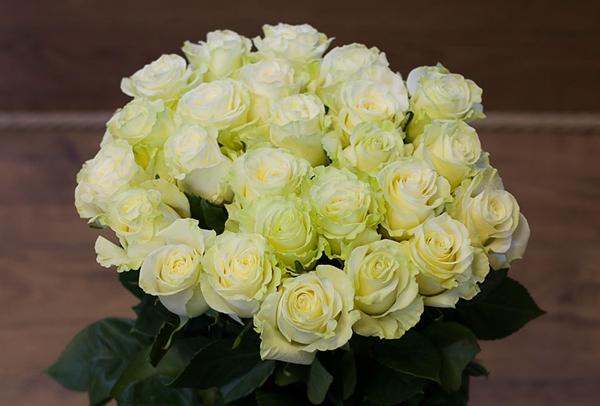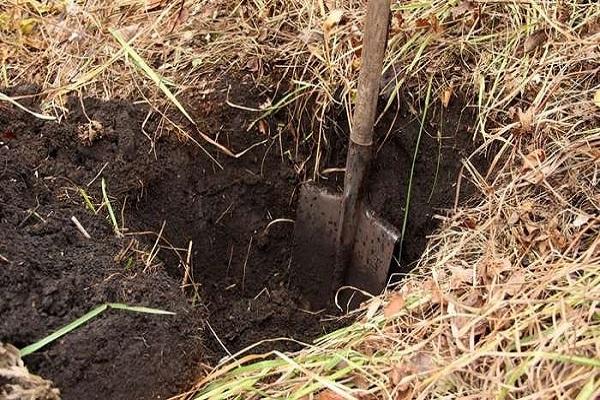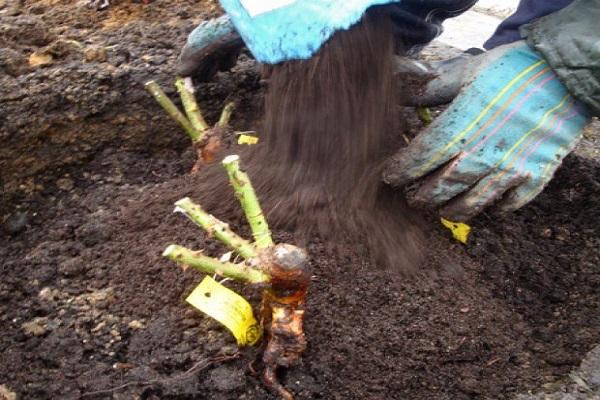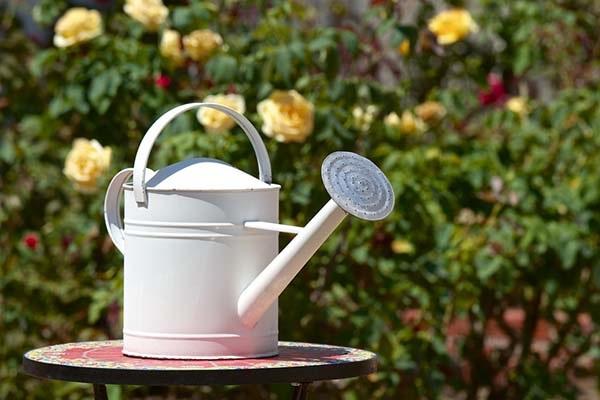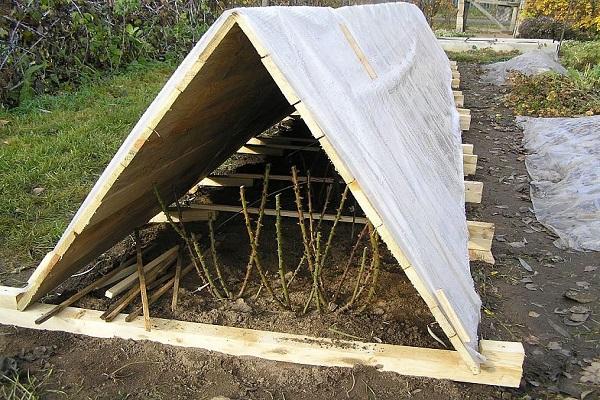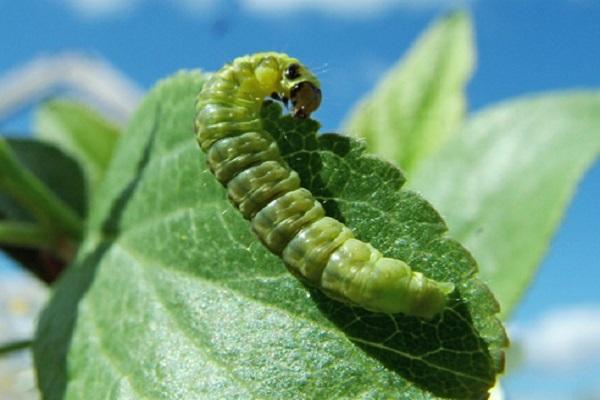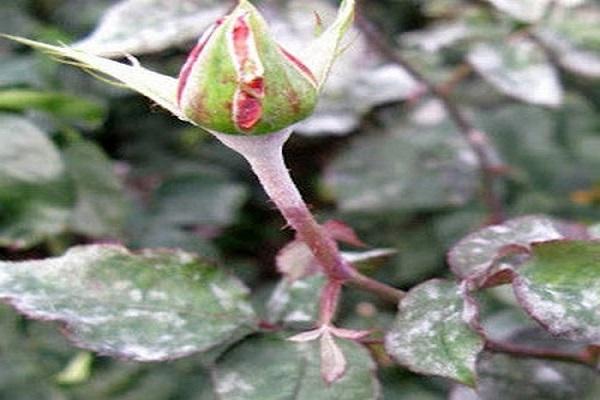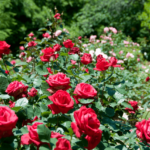The Limbo rose variety is very popular among gardeners. This crop has an unusual greenish tint to the petals. That is why it is popularly called the dollar. This plant is medium in size and disease resistant. In order for the plant to fully develop and delight with lush flowering, it is recommended to properly care for it.
- Origin and description of the Limbo rose variety
- Advantages and disadvantages
- The subtleties of growing roses
- Landing dates
- Site selection and soil preparation
- Seedling preparation
- Landing technology
- How to properly care for a plant
- Watering
- Top dressing
- Loosening and mulching
- Shaping and trimming
- Shelter for the winter
- Transplantation and propagation
- Protection from diseases and pests
- Use in garden design
Origin and description of the Limbo rose variety
Rose Limbo is considered an unusual crop with a unique shade of petals. It is often called green or lemon. However, in fact, the flowers have an original light yellow tint with a slight greenish tint. This plant was bred in 1999 by the German scientist Cordes.
The culture is characterized by cone-shaped buds with wavy petals. When they bloom, they form a small cup. The composition contains about 50 petals. The flowers have a light aroma.
The bushes are medium in size and reach 1 meter in height. They are decorated with large glossy leaves. The stems have virtually no thorns. The plant is not very resistant to frost, so it needs to be insulated for the winter.
The plant is characterized by an unusual shade, which is why it is difficult to combine with other crops. However, the Limbo rose looks good with conifers or the William Shakespeare variety.
Advantages and disadvantages
The advantages of culture include the following:
- long flowering;
- resistance to hot weather and cold;
- resistance to precipitation;
- low maintenance;
- resistance to fungal infections.
The only disadvantage of the crop is considered to be insufficient frost resistance. Therefore, it needs to be covered for the winter.
The subtleties of growing roses
Growing crops has a number of features. To achieve success in this, it is recommended to carry out planting work correctly.
Landing dates
It is best to plant roses of this variety in the spring. To get a strong plant, it is recommended to buy seedlings from specialized nurseries. This helps minimize the risk of the crop becoming infected with fungi or other infections.
Site selection and soil preparation
The culture needs a well-lit area.It is important to choose a place protected from drafts. Rose doesn't like gusts of wind.
In the fall, the area where you plan to plant the rose should be fed with manure and humus.
During the fall and winter, organic elements will dissolve in the soil and saturate it with nutrients.
Seedling preparation
Particular attention should be paid to the choice of planting material. Flower growers advise buying the plant in specialized stores or nurseries.
When choosing seedlings, you should make sure that there are no damaged areas, rot or mold. You should not buy bushes with too long or weakened roots. Before planting, the plant can be soaked in warm water.
Landing technology
To plant a bush, it is worth preparing a hole. Its size should be 50 centimeters. It is recommended to distribute the roots evenly along the bottom of the recess.
It is worth adding a drainage layer to the planting hole. It helps to avoid waterlogging of the root system and prevent its rotting. Drainage is done using crushed stones, stones and gravel. Then the hole should be carefully sprinkled, compacted a little and watered generously.
The plant can also be planted in a special container. In this case, it is recommended to place the container in the prepared recess and sprinkle it with soil. Then compact the soil and water the bush well.
How to properly care for a plant
To achieve success in growing a crop, it is recommended to properly care for it.
Watering
The rose needs sufficient soil moisture. If this recommendation is not followed, there is a risk of a decrease in the number of flowers and the appearance of too small buds. It should be borne in mind that excessive watering also negatively affects the development of the crop.
Top dressing
Every 2 weeks it is worth feeding the plant with mineral fertilizers.It is best to alternate organic matter with complex preparations.
Loosening and mulching
After each moistening of the soil, it is worthwhile to loosen it. This provides oxygen access to the plant's root system. Removal of weeds is of no small importance. It depletes the soil and leads to the spread of diseases and parasites.
It is also worth mulching the soil. This helps avoid moisture loss. Straw or peat is used to carry out the procedure.
Shaping and trimming
It is worth pruning the bushes in the fall, after flowering has ended. At the same time, old and diseased branches are removed. It is also recommended to trim the bush to give it the correct shape.
In addition, you can carry out spring pruning. This procedure helps to increase the number of new buds, which improves flowering. In order for the bush to bloom profusely, it is recommended to systematically remove faded buds.
Shelter for the winter
To protect the plant from frost, it is worth covering the bed with a mulch layer. Peat and humus are used for this. It is recommended to cover the bush with any material from above.
For regions with harsh climates, it is worth making a special wooden structure. If necessary, it is insulated with foam plastic. In the spring, after removing the cover, the plants are treated with copper sulfate.
Transplantation and propagation
The culture can be propagated in the following ways:
- Dividing the bush. This method is suitable for those who have a bush of this variety. It's easy enough to separate. It is worth separating a small fragment with good roots from the main plant. It is recommended to plant the bush immediately after division.
- By cuttings. Planting material can be obtained from cut branches of the crop. The cuttings should be 15 centimeters long and have several buds.
- By seed method.Planting material can be purchased at a specialized store. It is planted in April.
Protection from diseases and pests
The most dangerous pests for this plant are sawfly larvae, caterpillars, aphids, and leaf rollers. Parasites cause damage that slows down the development of the rose and negatively affects the appearance of the plant.
Methods of controlling insects depend on their variety. Caterpillars and leaf rollers should be removed manually. Contact insecticides will help get rid of aphids and ants.
If agrotechnical recommendations are violated, roses may become weaker. This provokes a decrease in resistance to diseases. Typically the crop suffers from powdery mildew, black spot and rust.
To cope with diseases, it is recommended to trim the bushes in time and treat them with chemicals. Damaged leaves and shoots should be removed immediately. This helps prevent the spread of the disease. After this, the culture is sprayed with copper sulfate.
Use in garden design
The greenish tint of the petals looks quite unusual and does not fit well with other plants. To get a harmonious composition, the Limbo rose should be planted next to coniferous plants. If you want to combine it with other roses, it is recommended to choose bluish varieties.
Rose Limbo is an unusual plant that is very popular among gardeners.
In order for a culture to develop normally, it needs to be provided with complete and high-quality care.

